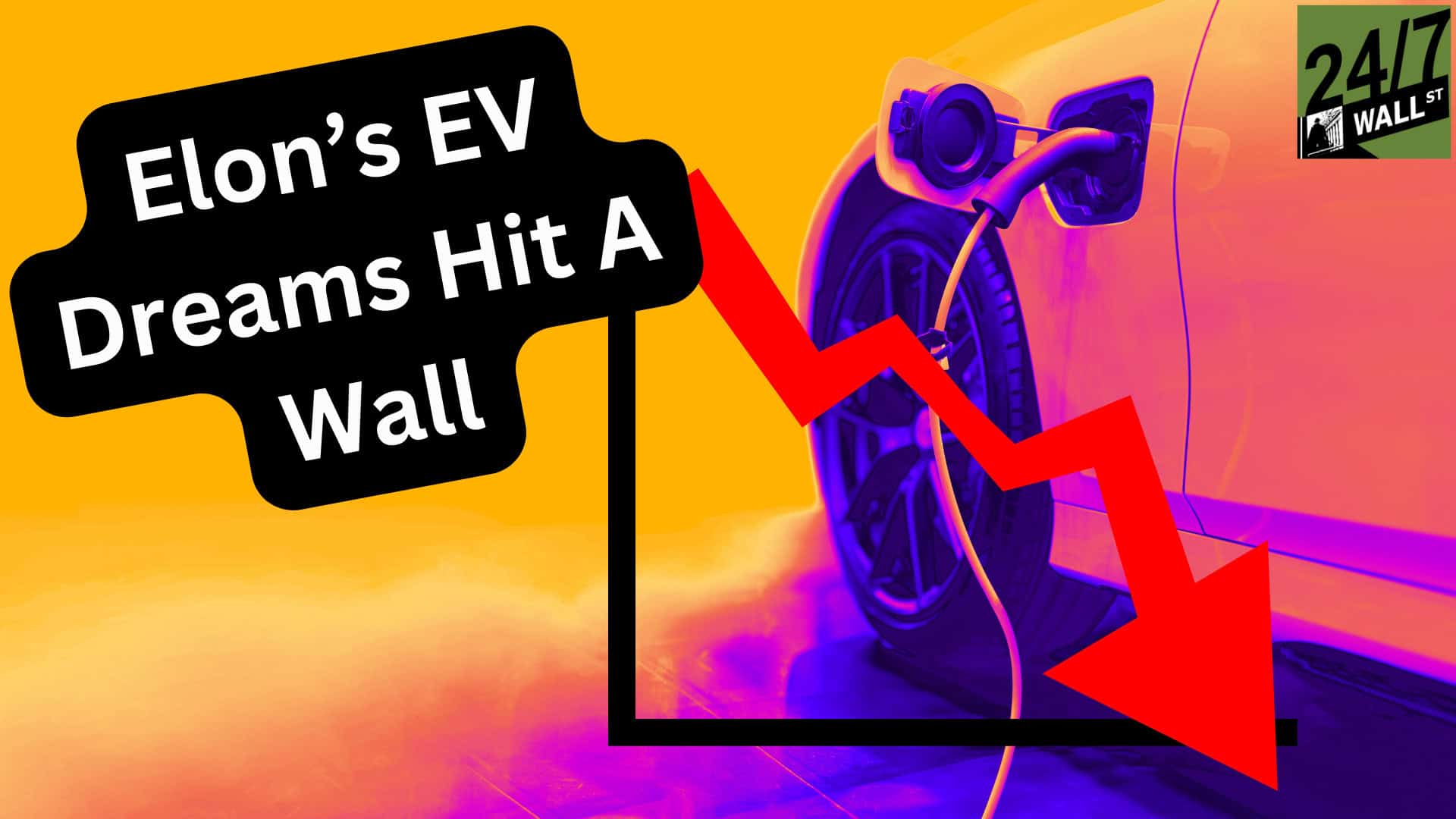
The EV market, after experiencing phenomenal growth, is currently facing significant challenges, with American buyers increasingly preferring hybrids and internal combustion engine vehicles. While EV sales are still growing, Tesla’s (NASDAQ: TSLA) sales are declining, with the demand shifting to other brands. Factors contributing to this slowdown include the saturation of EV demand, production issues, negative publicity, and rising costs, including insurance. Tesla, in particular, needs to expand its lineup and address these challenges to remain competitive.
Transcript:
Austin, we’ve seen a major retreat in the EV market after, let’s face it, it was phenomenal growth, including the Model Y being the best selling car on earth last year.
Things have ground to a halt. So the big question is, what’s going on?
Yeah, the bottom line is American buyers today, and this is interesting to compare 2024 to 2023 and prior years.
So new car buyers today are preferring hybrids and internal combustion engine vehicles.
There was a recent report from McKinsey that stated that as many as 40% of EV buyers actually want to go back to an internal combustion engine vehicle.
So when we look at the EV landscape, it’s definitely demand-challenged compared to prior years. It looks like some of the launches of new models, and you touched on the Model Y just being incredibly impressive, being the best-selling car on Earth last year, probably pulled forward and almost saturated a lot of EV demand and soaked it up really early.
But when we look specifically at Tesla, things are looking even rougher.
So if we look at sales data from April collected by Automotive News, it shows that although the EV market is continuing to grow, growth in the EV market is continuing to outpace traditional vehicles on a whole, largely just due to the small basis there.
With electric vehicles being up 14%, which seems like a promising number, but when you remove Tesla, those numbers spike much more.
So non-Tesla EV sales grew a full 69% over the same period.
So really what we’re seeing here is that EV demand is slowing down compared to last year. It’s still growing, but again, off a small base, but Tesla is really in retreat.
So all of that EV demand is coming from non-Tesla brands. So let’s look at some more numbers here.
Tesla sold 161,000 vehicles in the first quarter of 2023, but only 140,000 in the first quarter of 2024.
That’s a decline of over 13%. Meanwhile, other competitors like Hyundai and Kia saw double-digit or even triple-digit growth.
So what’s going on with Tesla demand? Well, the Model Y was obviously one of their most interesting mass market vehicles to come out in a long time. They pulled a lot of demand for it.
And since then, we’ve seen two full Cybertruck recalls, very slow sales overall, well short of forecasts.
We’ve seen price reductions to drive units, and frankly, just lots of negativity as the company has revealed that shift away from the more affordable Model 2 towards full autonomy, which was not received well on Wall Street.
And they’ve since walked that back, but it was pretty clear that that was only in response to some of the frustrations from Wall Street buyers and candidly, Elon Musk’s own polarizing behavior.
So if you boil all this together, what does it mean? You’ve got to give Tesla and Elon Musk credit for everything that’s been done and everything that got them here.
But investors are forward looking and rightly so. And frankly, right now, the company needs a bigger lineup of more appealing vehicles.
There’s more competition now than there was before. Their one mass market vehicle, Model Y, doesn’t appear to have a meaningful update on the horizon to drive more unit sales.
So when Tesla was out front here, they were the only game in town. They pulled a lot of demand forward. And now, more innovation doesn’t look like it’s going to be enough going forward.
Yeah, you know, Austin, I think one other issue at play here is we saw a lot of costs rising across the entire automotive industry.
EVs were supposed to be a fundamentally deflationary technology, but a lot of their input costs got inflationary.
We’re starting to see battery costs come down to make EVs more competitive.
If we want to see growth and them being more competitive with internal combustion cars, we’re going to need to continue seeing those cost reductions in the years ahead, right?
And if you continue playing that forward, Eric, we’ve seen auto insurance rates spike as much as 20% and 22% in the last year, and a lot of that is driven by the more expensive repairs that EVs typically entail.
It’s a lot more expensive to repair an EV compared to an internal combustion engine, and a lot of the repair techniques are still being worked out.
But auto shops, insurance agencies, so yeah, this technology in this vehicle, which is objectively a lot of fun to drive, but one of the promises was that the simplicity would drive down cost here, simply hasn’t been the case.
And we’ve had this unexpected rebound in insurance, which makes owning these vehicles even more expensive.
Are You Ahead, or Behind on Retirement? (sponsor)
If you’re one of the over 4 Million Americans set to retire this year, you may want to pay attention.
Finding a financial advisor who puts your interest first can be the difference between a rich retirement and barely getting by, and today it’s easier than ever. SmartAsset’s free tool matches you with up to three fiduciary financial advisors that serve your area in minutes. Each advisor has been carefully vetted, and must act in your best interests. Start your search now.
Don’t waste another minute; get started right here and help your retirement dreams become a retirement reality.
Thank you for reading! Have some feedback for us?
Contact the 24/7 Wall St. editorial team.





